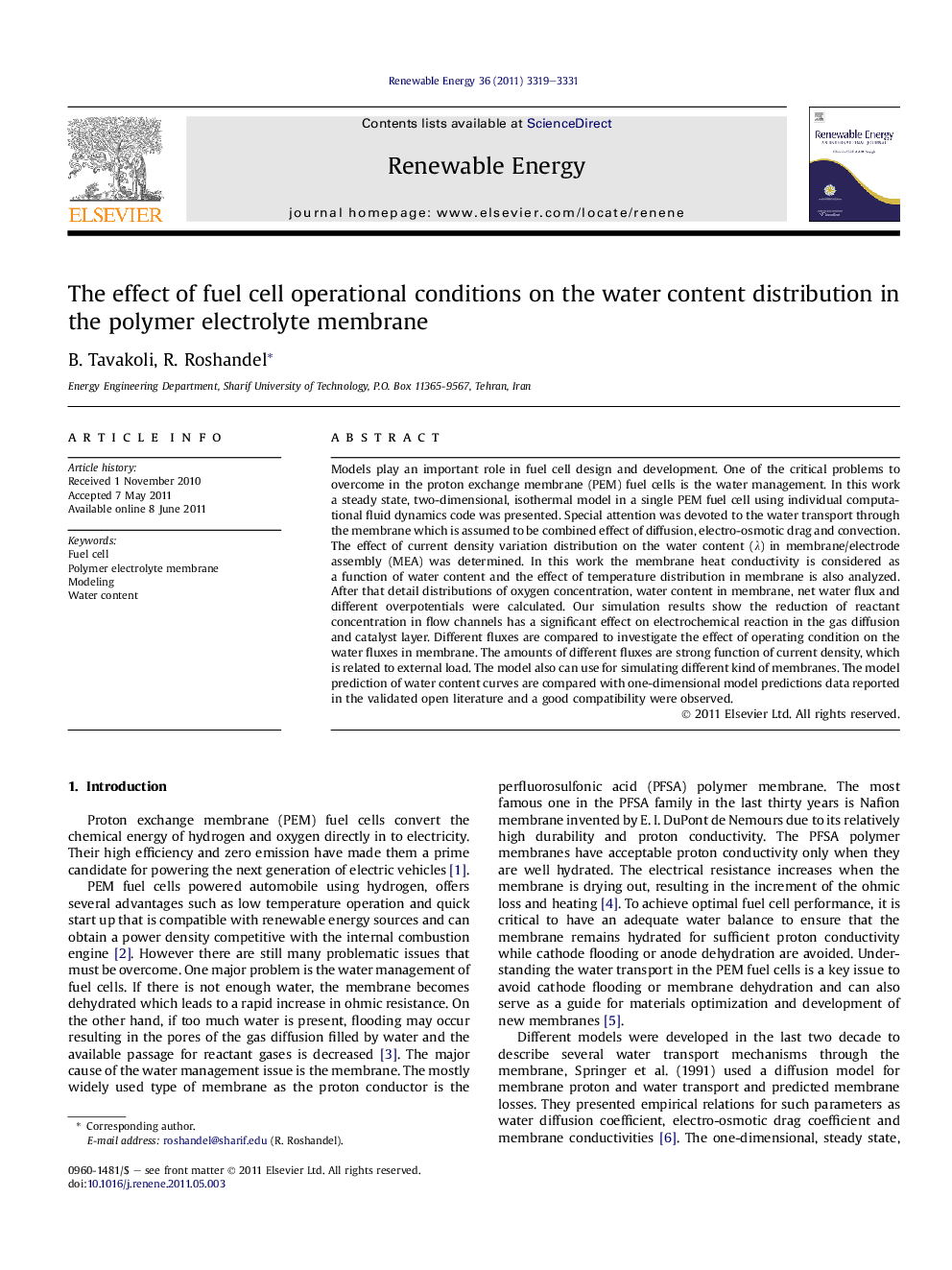| Article ID | Journal | Published Year | Pages | File Type |
|---|---|---|---|---|
| 301186 | Renewable Energy | 2011 | 13 Pages |
Models play an important role in fuel cell design and development. One of the critical problems to overcome in the proton exchange membrane (PEM) fuel cells is the water management. In this work a steady state, two-dimensional, isothermal model in a single PEM fuel cell using individual computational fluid dynamics code was presented. Special attention was devoted to the water transport through the membrane which is assumed to be combined effect of diffusion, electro-osmotic drag and convection. The effect of current density variation distribution on the water content (λ) in membrane/electrode assembly (MEA) was determined. In this work the membrane heat conductivity is considered as a function of water content and the effect of temperature distribution in membrane is also analyzed. After that detail distributions of oxygen concentration, water content in membrane, net water flux and different overpotentials were calculated. Our simulation results show the reduction of reactant concentration in flow channels has a significant effect on electrochemical reaction in the gas diffusion and catalyst layer. Different fluxes are compared to investigate the effect of operating condition on the water fluxes in membrane. The amounts of different fluxes are strong function of current density, which is related to external load. The model also can use for simulating different kind of membranes. The model prediction of water content curves are compared with one-dimensional model predictions data reported in the validated open literature and a good compatibility were observed.
► The membrane plays a key role in fuel cell performances while its ionic conductivity is highly dependent on its water content. ► At low current densities, convection is more effective than electro osmotic drag and as current density increases, it would be more significant. ► The variation of temperature along the cell is less than one degree of centigrade, however, the non-uniform temperature distribution may become significant for high temperature fuel cells and fuel cell stacks. ► The effect of current density variation distribution on the water content (λ) in membrane is significant especially at high current densities.
